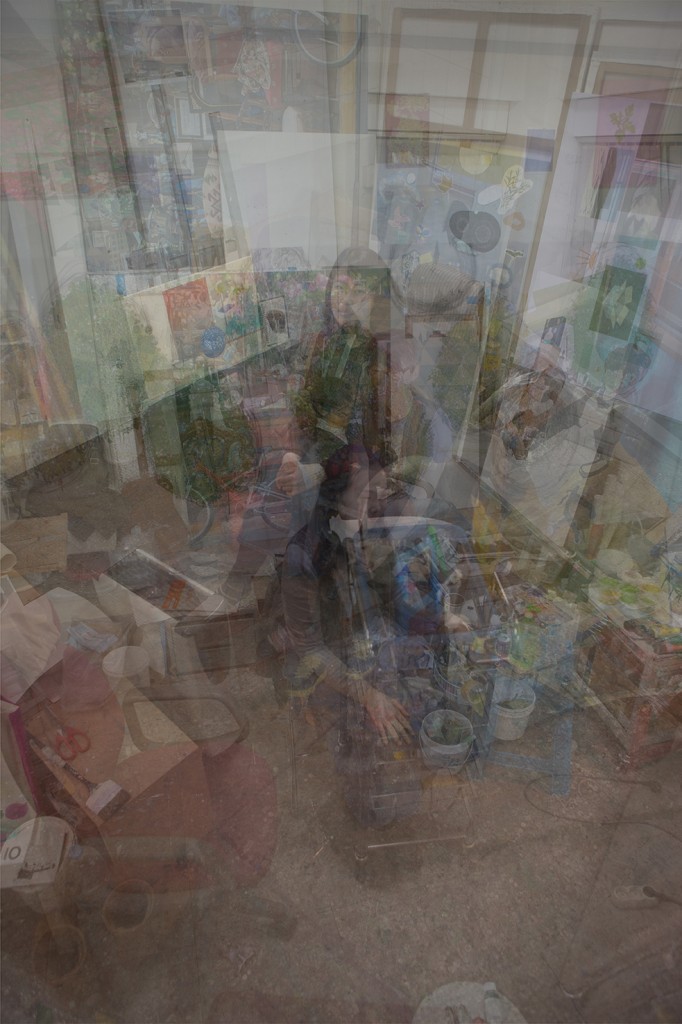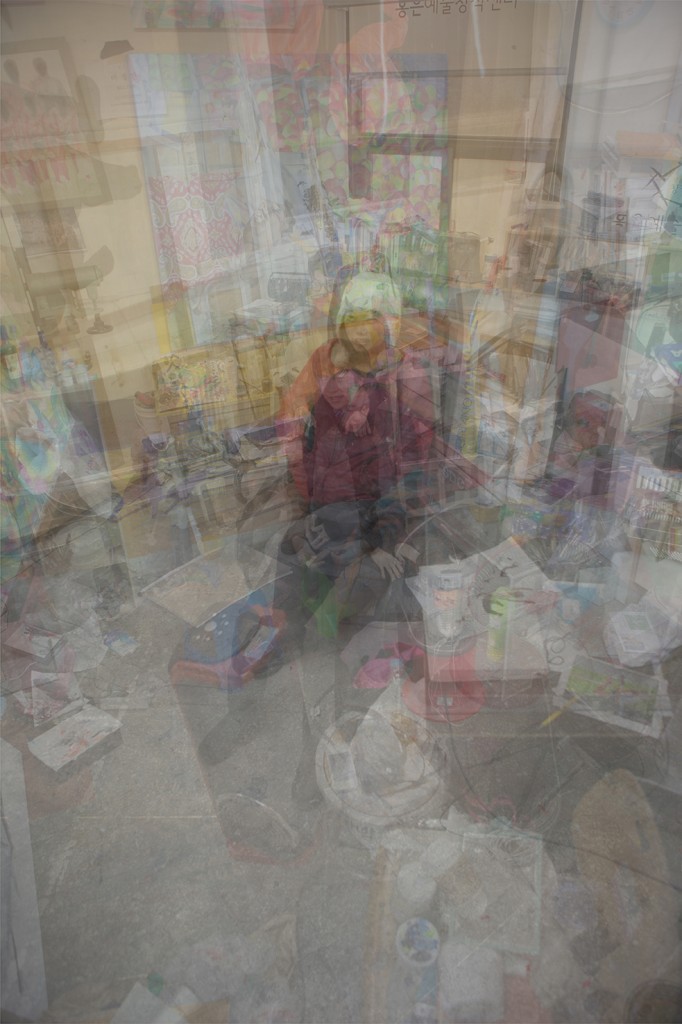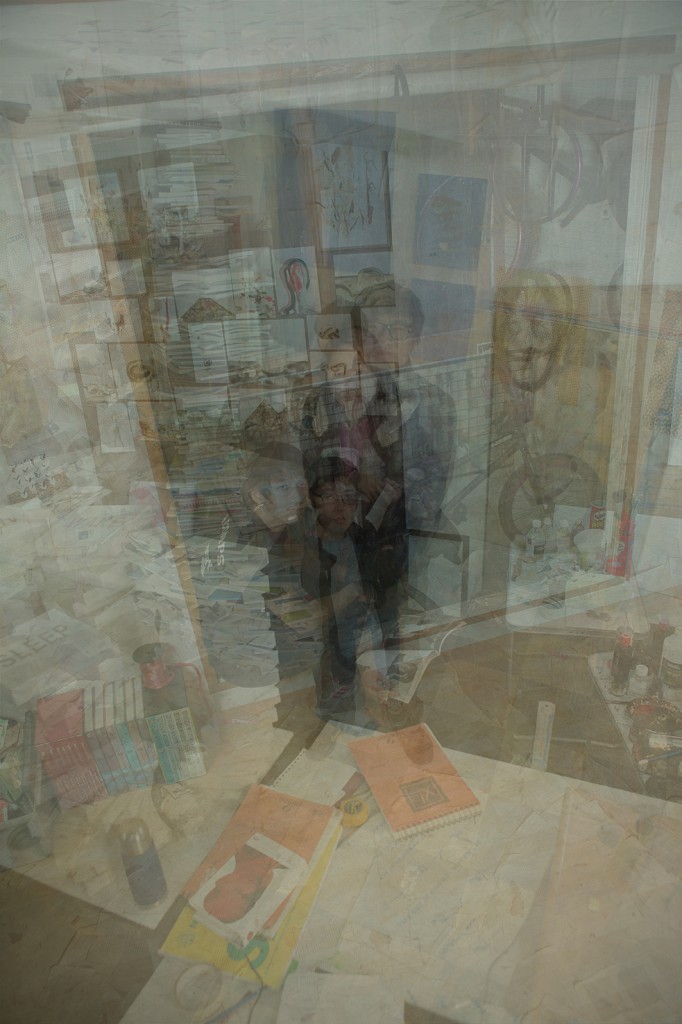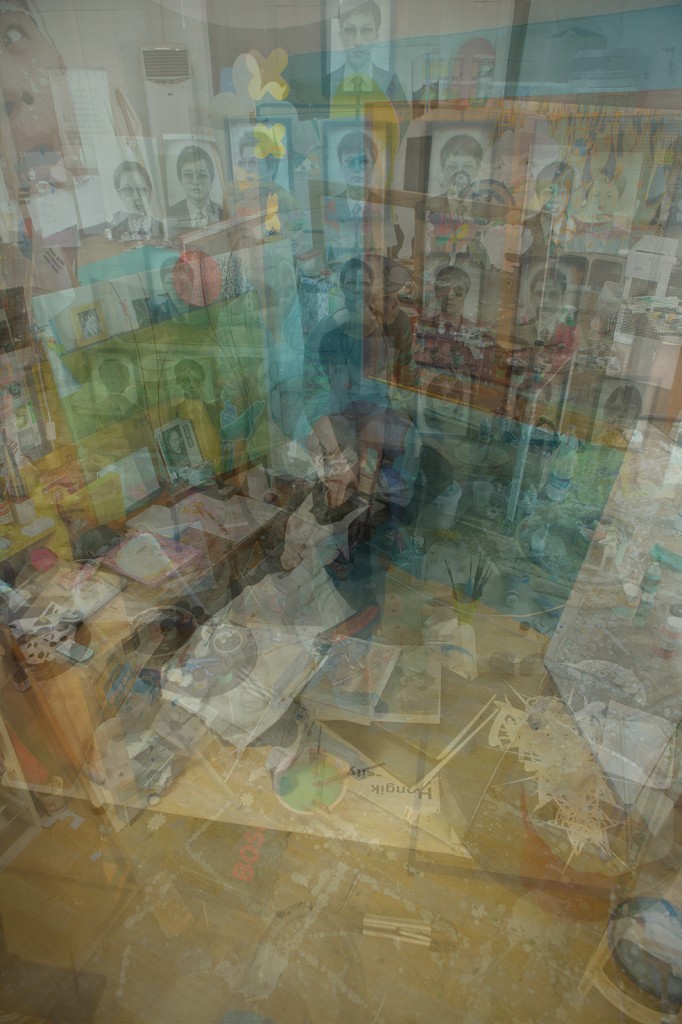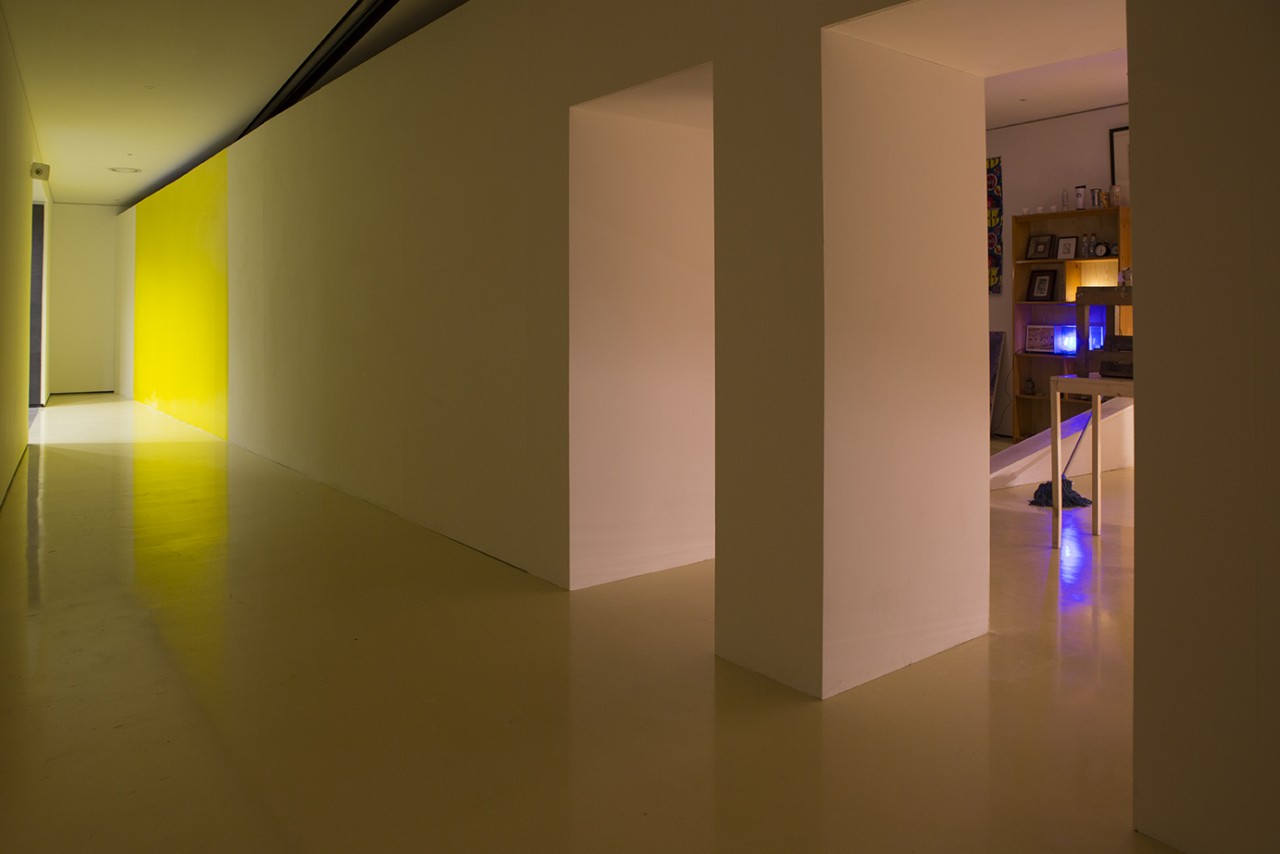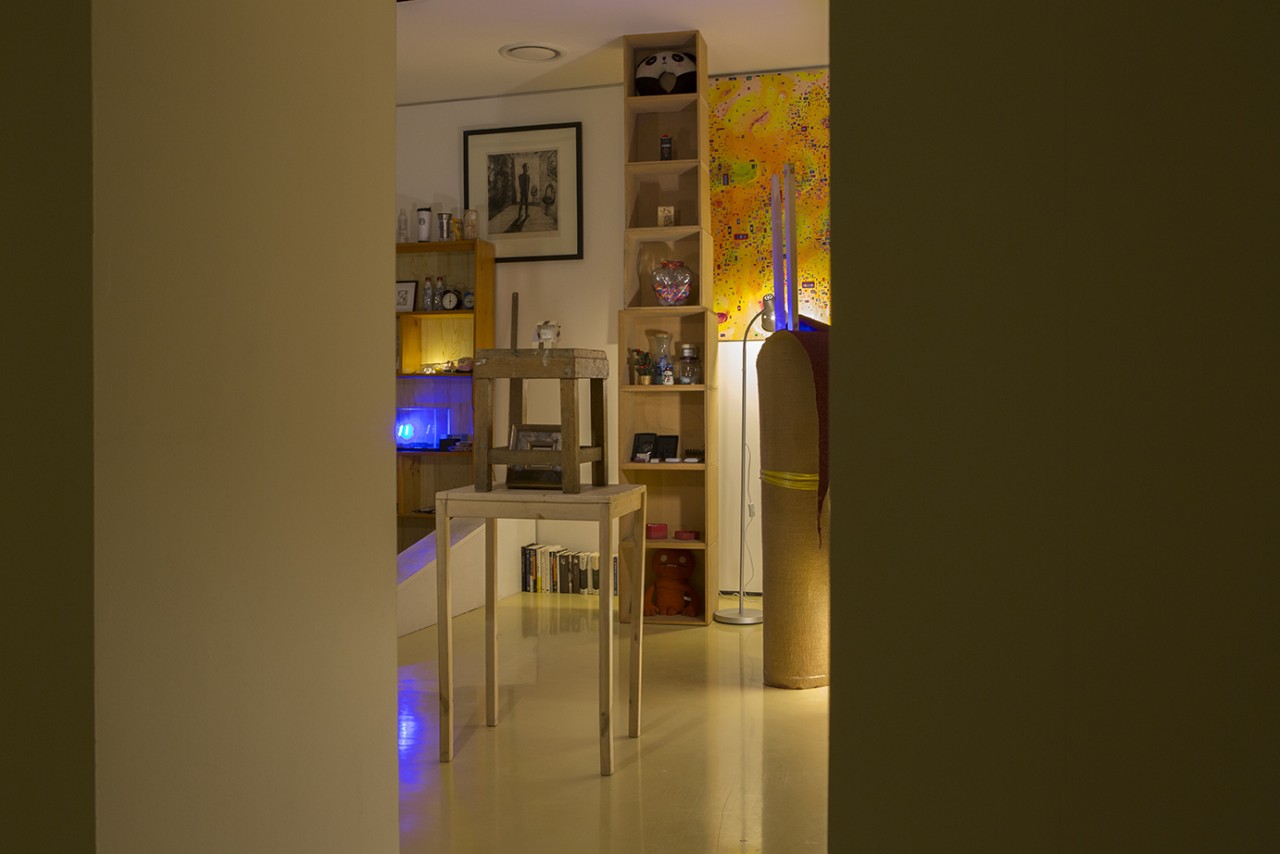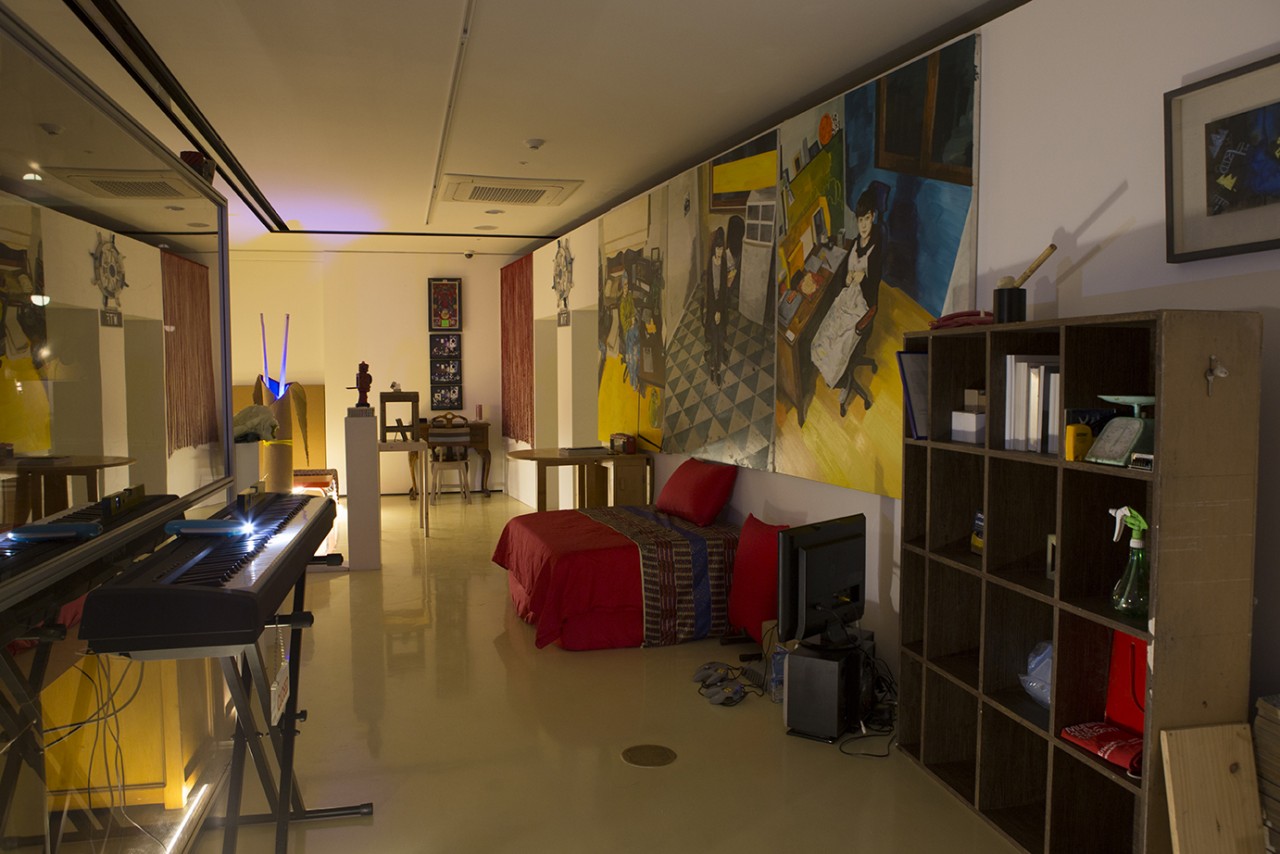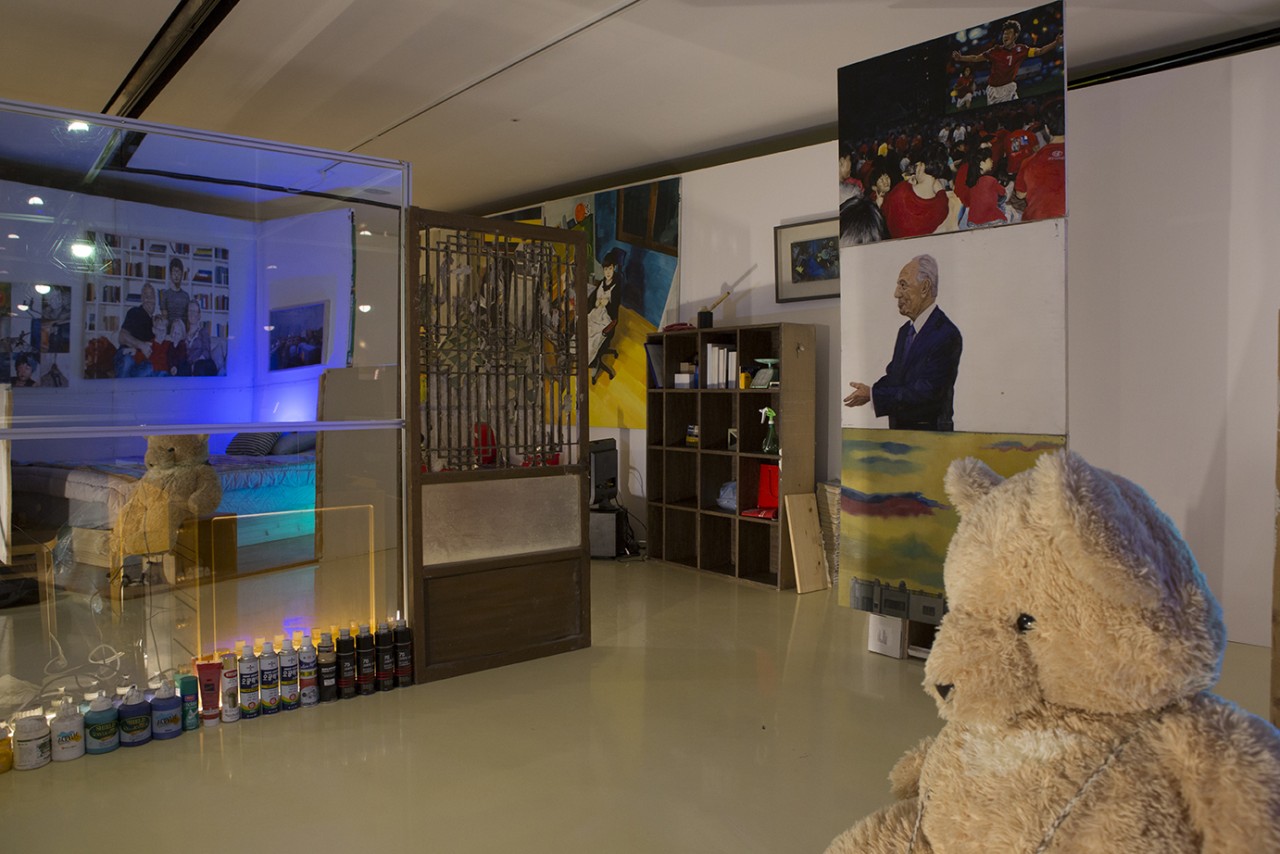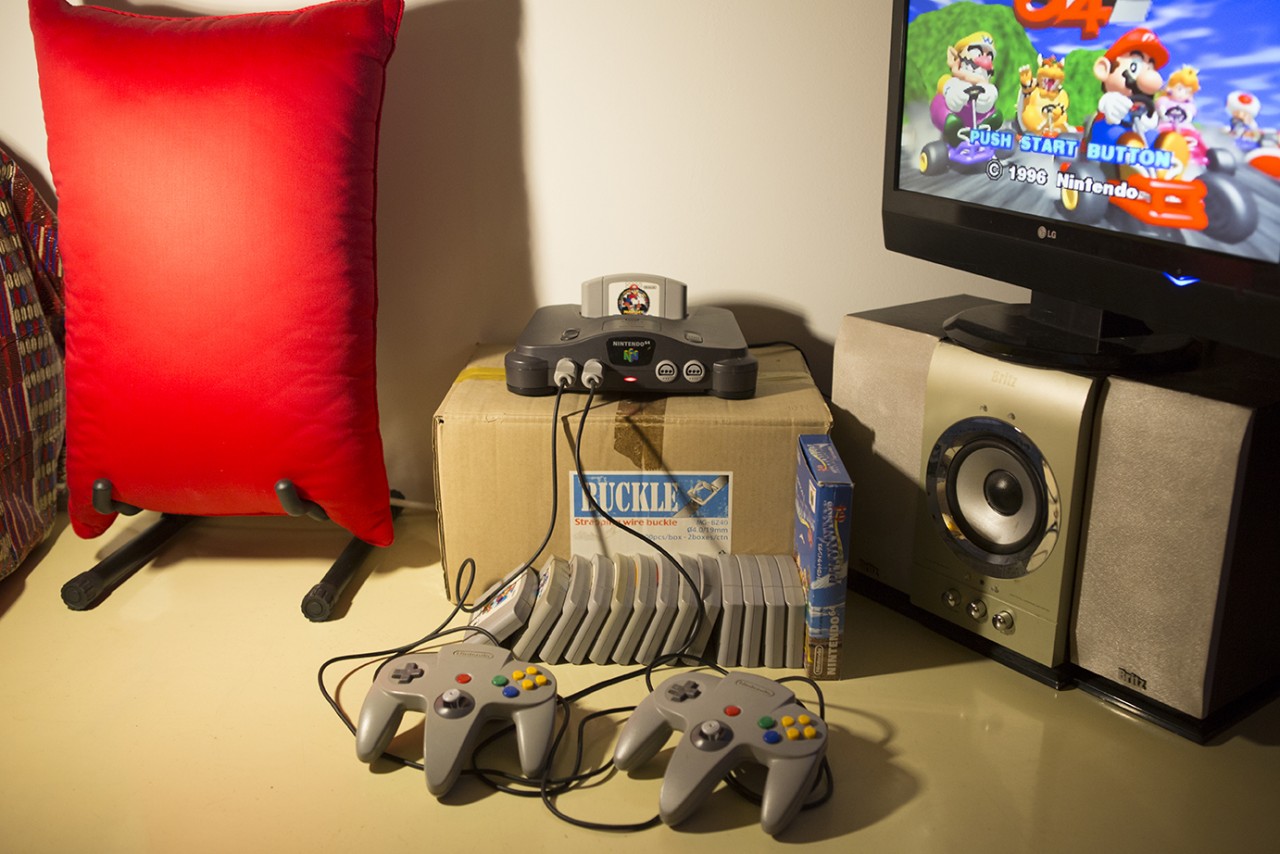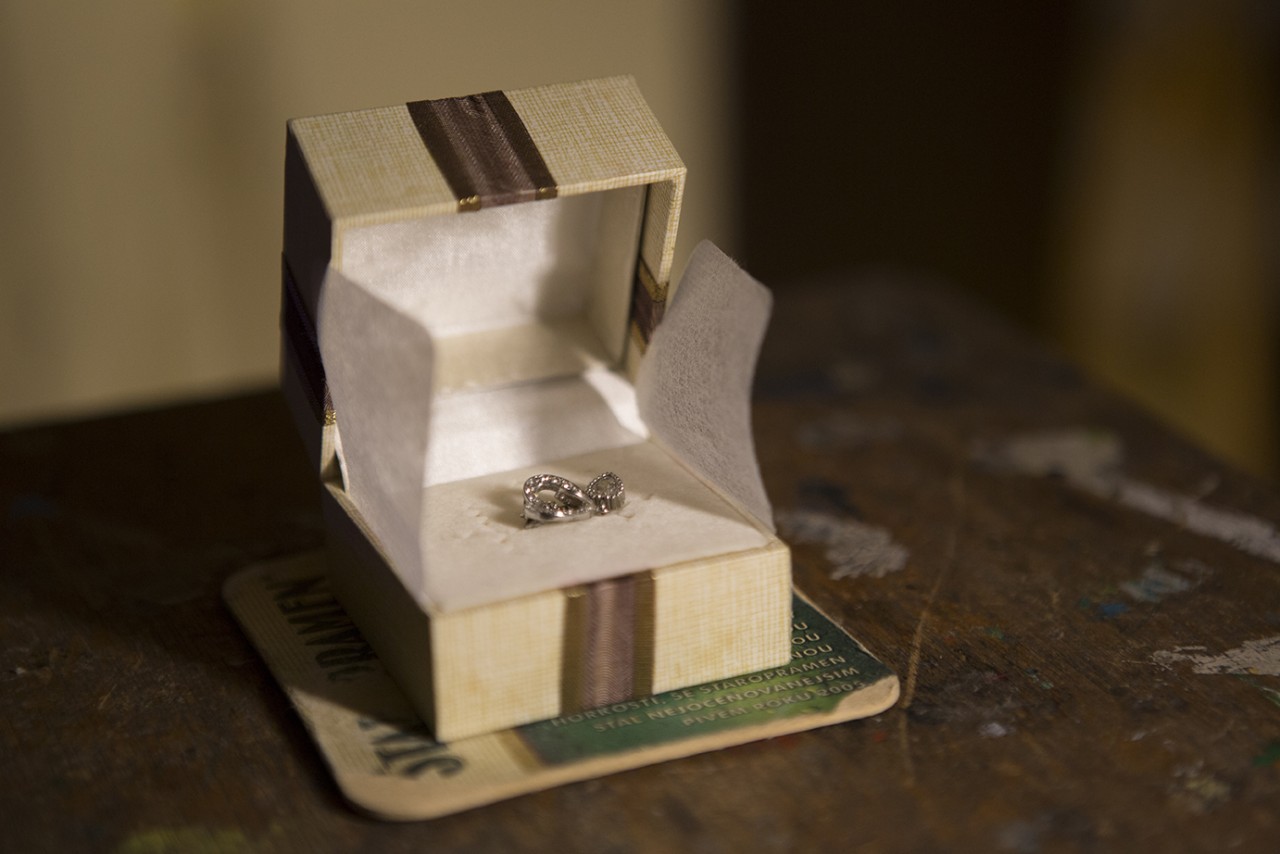Exhibitions
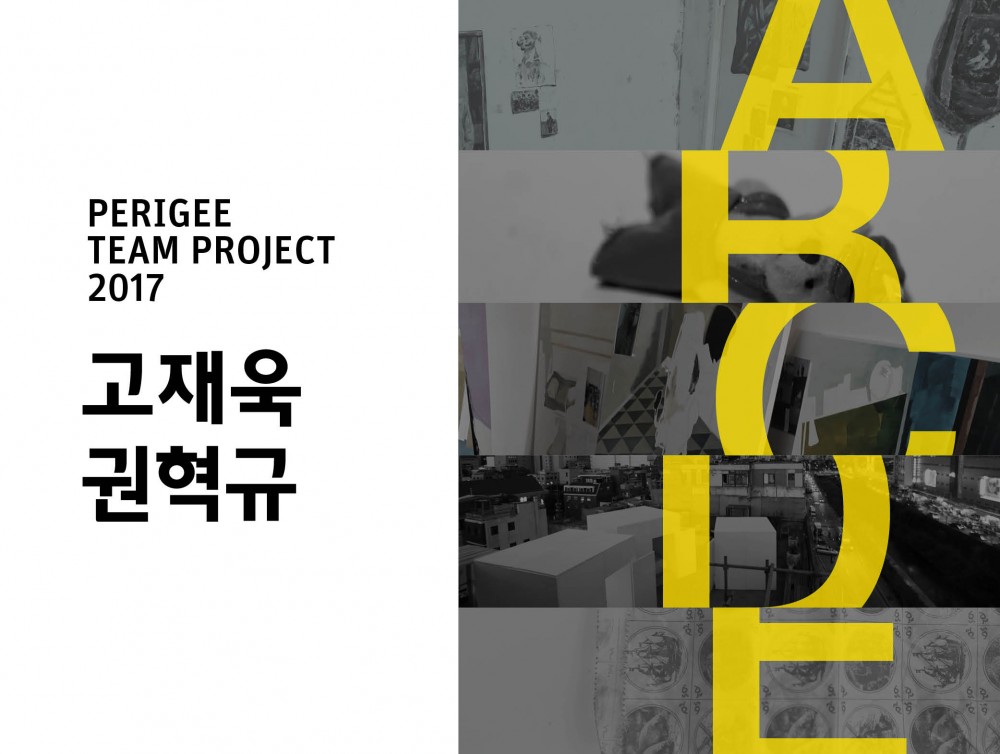
PERIGEE TEAM PROJECT 2017
ABCDE
2017.12.08. FRI ~
2018.02.10. SAT
F
<ABCDE>는 페리지 팀 프로젝트 2017의 참여 작가 고재욱과 기획자 권혁규가 1년 동안 진행한 협업의 결과물을 공유하는 전시이다. 긴 협업의 과정이 단 하나의 전시로 간결하게 정리될리 만무하고, 결과 전시만으로 둘의 협업을 피상적으로 재단해서도 안 될 일이다. 그럼에도 불구하고 이번 전시를 유심히 살펴봐야 하는 이유는 전시를 통해 이들의 협업이 어디로 향했는지 그것이 어떤 체계를 기반으로 진행되었는지 유추해볼 수 있기 때문이다.
얼마 전 진행한 인터뷰에서 두 참가자는 협업 과정 동안 나눈 일련의 ‘대화’를 전시의 중심축으로 설정했다고 밝혔다. 프로젝트를 통해 처음 만난 두 참가자에게 대화는 서로의 작업과 기획을 알기 위해 그리고 협업이라는 창작 방식을 구동시키기 위해 반드시 결탁해야만 하는 상황이었을 것이다. 서로의 미술이 요원하기만 한 상태로 시작된 둘의 협업은 그렇게 여러 대화를 분기하며 그것을 원료로 삼으며 진행되었다. 자연스럽게 그 시작은 대화를 만든 상황에 관한, 즉 협업이라는 창작 방식에 관한 것이었다. 프로젝트 시작 전 주고받은 편지에서 두 참가자는 작가와 기획자 간의 협업이 얼마나 문제적이고 모순적일 수 있는지, 이번 프로젝트가 어떤 고밀도의 문제를 야기할 것이지 이야기한다. 또 이번 협업이 자신의 미술을 스스로 의심하고 무너뜨리고 또 다시 세우기를 반복하는 힘든 과정이 될 것이라고 예상한다. 이 대화는 다시 프로젝트가 만들어....
F
ABCDE is an exhibition sharing the results of collaboration between artist Jaewook Koh and curator Hyukgue Kwon, who took part in Perigee Team Project 2017. The long span of their collaboration cannot be accounted for in just one exhibition and their collaborative work should not be judged superficially by this exhibition alone. Even still, this exhibition should be carefully examined since it may intimate the orientation of their cooperation and the system on which their collaborative work is based.
These two participants stated in an interview conducted lately that they had decided to bring the “conversations” they had held over the course of their collaboration to the center of the exhibition. These conversations were more than likely a prerequisite for the both of them to better understand each other’s works and plans as the project marked the first instance in which they had met. Their joint work launched in a state in which they were both unaware of each other’s art and concepts was carried out, using their discussion as material. Their collaborative work naturally started from their conversation....
<ABCDE>는 페리지 팀 프로젝트 2017의 참여 작가 고재욱과 기획자 권혁규가 1년 동안 진행한 협업의 결과물을 공유하는 전시이다. 긴 협업의 과정이 단 하나의 전시로 간결하게 정리될리 만무하고, 결과 전시만으로 둘의 협업을 피상적으로 재단해서도 안 될 일이다. 그럼에도 불구하고 이번 전시를 유심히 살펴봐야 하는 이유는 전시를 통해 이들의 협업이 어디로 향했는지 그것이 어떤 체계를 기반으로 진행되었는지 유추해볼 수 있기 때문이다.
얼마 전 진행한 인터뷰에서 두 참가자는 협업 과정 동안 나눈 일련의 ‘대화’를 전시의 중심축으로 설정했다고 밝혔다. 프로젝트를 통해 처음 만난 두 참가자에게 대화는 서로의 작업과 기획을 알기 위해 그리고 협업이라는 창작 방식을 구동시키기 위해 반드시 결탁해야만 하는 상황이었을 것이다. 서로의 미술이 요원하기만 한 상태로 시작된 둘의 협업은 그렇게 여러 대화를 분기하며 그것을 원료로 삼으며 진행되었다. 자연스럽게 그 시작은 대화를 만든 상황에 관한, 즉 협업이라는 창작 방식에 관한 것이었다. 프로젝트 시작 전 주고받은 편지에서 두 참가자는 작가와 기획자 간의 협업이 얼마나 문제적이고 모순적일 수 있는지, 이번 프로젝트가 어떤 고밀도의 문제를 야기할 것이지 이야기한다. 또 이번 협업이 자신의 미술을 스스로 의심하고 무너뜨리고 또 다시 세우기를 반복하는 힘든 과정이 될 것이라고 예상한다. 이 대화는 다시 프로젝트가 만들어 낼 문제적 상황을 어떻게 마주할 것인지, 어떤 체계를 통해 협업을 진행할지 논의하는 쪽으로 전환된다.
고재욱과 권혁규는 어떤 종류의 협업이든 거기에는 분명한 시스템이 전제되어야 한다는데 동의하고 하나의 분명한 협업 체계를 설정하려 노력한다. 두 참가자는 누구도 포기하지 않고 또 독점하지 않는 무대에서 각자의 목소리를 내며 하나의 전시를 완성하는 이상적인 어쩌면 실현 불가능한 협업을 열망한다. 프로젝트에서 이 둘은 스스로를 A와 B로 명명한다. 작가를 위해 봉사하는 기획자도, 기획자가 내던진 담론에 휘둘리는 작가도 아닌, 아직 무엇이 될지 모르는 협업을 시작하는 서로의 파트너 A와 B로 존재하는데 합의하는 것이다. 물론 A와 B는 분명 누군가를 지시하고 있고 그 대상 또한 명확하다. 하지만 모두가 알고 있는 이 ‘가짜 익명성’은 둘의 대화에 묘한 틈을 만들어 낸다. 즉 A와 B는 작가 그리고 기획자의 단순한 환영적 복제가 아니다. 실제 대상에게 그러니까 두 참가자에게 본래 자신의 역할로부터 좀 더 멀리 떨어지길 유도하는 약속된 장치이자 그것의 입장 표명이다. 좀 더 자세히 설명하면, 두 참가자는 서로 합의된 가짜 익명성을 통해 가짜 자유를 획득하게 되는데 이 가짜 자유는 협업 안에서만큼은 분명히 작동하는 실제적 진동체로 존재한다. 협업 시스템에 내재된 허구성은 현실에서 미묘하게 진동하며 참가자에게 진짜 자유를 부여하는 것이다. 그리고 두 참가자는 오직 자유로운 사람만이 가장 유익하고 끈끈하게 결합한다는 사르트르 Jean Paul Sartre의 말처럼 기존 작가 기획자의 제한적 역할에서 벗어나 – 혹은 그러한 착각 속에서 - 상대방의 미술을 이전보다 더 진지하게 새롭게 바라본다. 독점하지 않는 고립되지 않는 무대라는 실현 불가능한 협업의 모델이 허구적 장치로 보완되며 참가자에게 자연스러운 자기 발언과 상호 충돌을 허락하는 것이다.
협업 시스템은 분명하지만 그 안에서의 대화는 그렇지 않다. 대화는 여러 방향으로 뻗어 나간다. 정의되지 않은 사고의 편린들, 강박적 관념들, 막연한 열망과 기억같이 지극히 모호한 것들은 물론 과거 진행한 전시와 프로젝트, 레지던시 프로그램, 인상 깊었던 작품이나 전시와 같은 미술에 관한 것들, 그리고 주변 친구들, 프로젝트를 통해 만난 일반인들, 그들이 들려준 삶의 이야기같이 일상적인 것들까지 실로 다양한 지점을 횡단한다. 물론 특정 주제를 바라보는 둘의 시선은 결코 완전히 포개어지지 못하고 항상 조금씩 비껴난다. 어쩌면 당연한 이 대화의 과정을 통해 두 참가자는 서로에 대한 그리고 스스로에 대한 무지를 지속적으로 확인 재정립한다. 그렇게 두 참가자는 서로에게 동의나 설득을 강요하지 않는 다분히 의도된 혼돈을 지속하며 끊임없이 둘의 공통점과 차이점을 발견해 간다. 이들의 협업은 미하일 바흐찐 Mikhail Bakhtin 이 설명하는 대화dialogue처럼 누구도 앞으로의 상황을 예상하거나 통제하지 않은 상태로 서로의 의견을 자유롭게 교환하는 것이다. 이는 종착지를 설정한 상태로 진행되는 대화conversation와는 근본적으로 다른, 그 행위 자체가 새로운 가능성을 적재한다.
그렇다면 이 대화들은 전시에서 어떻게 공유될까? 우선 대화는 전시에서 한 권의 책으로 정리된다. 두 참가자가 무한히 펼쳐 놓았던 일련의 대화들이 문서와 이미지라는 공유 가능한 형태로 변환 정리된다. 흥미로운 점은 이 과정 동안 A와 B의 서로 합의점을 찾지 못한 의견들이 자연스럽게 버무려지고 조율되며 그 중간을 찾아간다는 것이다. 무수히 많은 대화의 그림자들이 서로 겹쳐지며 하나의 형상을 만들어 가는 것인데, 두 참가자가 최초에 설정해 놓은 익명성과 픽션의 시스템은 여기서도 온전히 작동한다. 책에서 A와 B의 대화는 다시 C로, 그리고 D 와 E로 전이 확장된다. A와 B의 대화가 협업 프로젝트에 관한 두 참가자의 입장을 공유하고 협업의 체계를 논의하는 것이었다면 C와 D, 그리고 E는 그 체계로부터 뻗어 나온 다양한 이야기들의 상징체로 볼 수 있다. 각각의 지점을 굳이 정리해본다면, C에는 두 참가자가 주변 동료들을 통해 그려본 동시대 작가 혹은 큐레이터의 모습이, D에는 C가 드러내는 동시대 미술의 풍경이 담겨 있다. 그리고 E에는 C와 D의 대화에서 발견된 두 참가자가, 어쩌면 같은 또래 대부분이 공유하는 삶의 환경과 일상의 모습이 그려져 있다. 즉 A와 B의 대화는 점진적으로 C와 D로 다시 E로 이동하며, 협업이라는 창작 방식에 관한 대화에서 보다 넓은 미술의 대화로 그리고 동세대가 공유하는 삶의 이야기로 그 내용을 확장시켜간다.
책에서 A, B, C, D, E로 구획된 대화들은 고재욱이 그동안 지속해온 작업과 상당 부분 포개어진다. 고재욱은 일련의 작업과 프로젝트를 통해 다양한 인물들의 이야기를 추적 수집해왔다. 가족과 주변 동료들은 물론 프로젝트에 참여한 연인들을 포함한 다수의 일반인들 그리고 할리우드 스타와 역사적 인물들까지 다양한 군상들의 이야기가 작가의 작업 곳곳에 위치해 있다. 개인적인 호기심이나 우연한 기회를 통해 취득하게 된, 별 이유 없이 생각 한쪽을 차지하고 있던 타인의 이야기는 그의 작업에서 마치 우리가 살고 있는 오늘 이곳의 모습을 떠올리게 하는 표상으로서 역할한다. 마찬가지로 작가는 이번 프로젝트에서 그동안 기록해온 여러 인물의 이야기를 협업의 대화 A, B, C, D, E에 밀어 넣는다. 작가가 추적 수집한 어떤 사람 A의 이야기는 기획자의 글을 통해 허구의 인물 A에 혹은 B나 C에 덧대어진다. 그 과정은 마치 소설을 쓰는 것처럼, 편지를 보내는 것처럼 때론 다큐멘터리 영화를 촬영하는 것처럼 허구와 실제 사이를 가로지르며 진행된다. 허구도 실제도 아닌 그 사이 어딘가에 위치하는 A, B, C, D, E의 이야기는 그렇게 작가와 기획자가 공유한 현실의 여러 단면을 드러낸다. 여기서 ‘대상’은 점차 희미해지고 ‘이야기’만이 강조된다. 둘의 협업은 대상 그 자체보다 공감하는 이야기와 공감의 방식에 집중하는데, 이는 타인을 대상화한다는 것, 그것을 미술의 재료로 삼는다는 것의 문제와 한계를 분명히 인지하는 것이기도 하다. 그렇게 전시의 책은 미술 밖의 이야기 그리고 아직 작품이 되지 못한 어떤 추진체같은 이미지들까지 끌어안으며 두 참가자가 지나온 협업의 과정을 하나하나 되짚는다.
전시장에는 두 참가자가 진행한 대화를 상징할만한, 다시 말해 책에 구획된 A, B, C, D, E를 시각화하는 이미지와 오브제 설치가 주를 이룬다. 대화집이 다양한 형식의 문서와 이미지를 다루며 작가와 기획자의 대화를 상상하게 한다면 전시는 제한적이지만 좀 더 분명한 대화를 경험하게 한다. 책이 상상적이라면 전시는 보다 경험적이다. 전시장에 들어서면 전시장 전면을 막고 있는 커다란 가벽을 마주하게 된다. 성급한 누군가는 이 가벽을 작가와 기획자 사이에 위치 시킬 것이고 어느 누군가는 책과 전시 사이에 또는 허구와 실제 사이에 어쩌면 보이는 그대로 미술의 안과 밖 사이에 위치시킬 것이다. 그 가벽이 어디에 놓이든 중요한 건 전시 작품을 보기 위해서는 가벽에 나 있는 비좁은 문을 통과해야 한다는 것이다. 그리고 이 경험은 고재욱이 과거에 진행한 일명 룸 프로젝트, 노래방 프로젝트처럼 매우 사적인 큐브 공간 안으로 입장하는 묘한 기분을 전달한다. 수고스럽게 마주한 가벽 넘어의 작품 하나하나에는 어떤 사람 A, B, C, D, E의 이야기가 담겨있다. 하지만 각각의 이야기들은 무수히 많은 삶의 단면이 그려내는 현실의 풍경처럼 서로 분명히 구별되지 않으며 그 경계를 그리기 어려울 정도로 얽혀 있다. 벽 너머에 존재하는 오브제와 이미지는 개별적으로 존재하는 심미적 대상이 아닌 작가와 기획자가 서로 공감하는 오늘의 풍경이자 그것의 파편들인 것이다. 그렇게 전시는 단일 서사에 묶여 있기보다 전시 안과 밖에 존재하는 여러 이야기와 이미지를 상상케하는 매개체로서 진동한다. 그리고 이는 그동안 권혁규가 실험해 온 기획과 맞닿아 있다. 예를 들어, 그가 최근 진행한 전시 <러브스토리Love Story>는 작품이 전시와 만나는 접점에 주목하며 동시대 미술이 전시라는 매체에 어떠한 (비)관계를 설정하며 공유 확장되는지 논의한다. 또한 런던에서 진행한 <Penumbra> 와 <After the Event>는 완성된 작품을 정해진 공간에 디스플레이하는 일반적인 그룹전 형식에서 탈피해, 여러 작가의 상이한 창작 지점을, 그 안에서 발생하는 충돌과 균열을 전면에 드러낸다. 위 전시들은 미리 쓰여진 기획의 서사를 따르며 텅 빈 명멸만을 반복하는 봉합된 덩어리가 아니라, 전시가 필연적으로 내재할 수밖에 없는 한계를 드러내며 전시의 전과 후 또는 전시의 안과 밖의 시간을 상상하게 하는 틈입의 흔적으로서 작동한다.
두 참가자는 프로젝트 시작 전 협업에 대한 각자의 의견을 교환하고, 서로의 작업과 전시에 대해 이야기했다. 그리고 서로가 합의하는 시스템을 설정하고 그 안에서 긴 대화를 진행했다. 그 대화는 물론 전시라는 종착지를 염두에 둔 것이었지만 결코 그것만을 향해 달려가는 것은 아니었다. 프로젝트의 결과로 제시된 전시와 책에는 실제와 픽션이 무수히 교차한다. 책에 담긴 허구의 이야기에는 두 참가자가 기록한 실제 인물들의 이야기가 섞여 있고 전시 작품은 그 이야기를 다시 시각화 상징화해 관객과 공유한다. 이번 협업은 처음부터 끝까지 익명성과 허구성을 하나의 시스템으로 설정하고 진행되었다. 권혁규가 과거에 진행한, 픽션을 전시화한 <Richard Smith> 와 <Exhibition II>가 엿보이는 지점이기도 하다. 고재욱과 권혁규는 스스로의 이름은 물론 전시의 타이틀까지 모두 허구의 영역으로 몰아넣는다. 이름은 절대 번역될 수 없고 제목은 항상 무언가를 상징한다. 그것이 이름과 제목의 근원적 속성일 것이다. 프로젝트에서 이들은 스스로의 이름과 전시의 제목을 <ABCDE>로 명명하며 자신들의 협업은 절대성의 획득이 아닌 많은 이야기와 경험을 촉발시키기 위함이라고 설명한다. 이번 팀 프로젝트에서 두 참가자가 공유하는 현실의 이야기는 줄곧 허구의 그릇에 담긴다. 온갖 방향으로 뻗쳤던 대화는 허구의 A, B, C, D, E로 정리되고, 그들의 이야기는 다시 전시와 책이라는 물리적 현존으로 제시된다. 허구와 실제의 위치를 계속해서 바꿔가며 진행된 고재욱과 권혁규의 협업은 그렇게 무한한 이야기의 사이클을 지속한다. F
ABCDE is an exhibition sharing the results of collaboration between artist Jaewook Koh and curator Hyukgue Kwon, who took part in Perigee Team Project 2017. The long span of their collaboration cannot be accounted for in just one exhibition and their collaborative work should not be judged superficially by this exhibition alone. Even still, this exhibition should be carefully examined since it may intimate the orientation of their cooperation and the system on which their collaborative work is based.
These two participants stated in an interview conducted lately that they had decided to bring the “conversations” they had held over the course of their collaboration to the center of the exhibition. These conversations were more than likely a prerequisite for the both of them to better understand each other’s works and plans as the project marked the first instance in which they had met. Their joint work launched in a state in which they were both unaware of each other’s art and concepts was carried out, using their discussion as material. Their collaborative work naturally started from their conversations pertaining to the situation and the way in which they should collaborate. In the letters they had exchanged prior to the project, they described how problematic and contradictory collaborative work between an artist and a curator could be and the problems that could arise with such a project. They also predicted that this collaboration could serve as an opportunity to become skeptical about their own worlds, allowing them to break them down and rebuild them. Their conversations then mutated into discussions on how to confront the problematic situations that might occur and what kind of system they should depend on to carry out their joint work.
Jaewook Koh and Hyukgue Kwon have made efforts to establish a collaboration system, agreeing that a clear system should be a prerequisite for any type of cooperation. They were eager for a type of collaboration that is ideal yet probably impossible to realize in a situation in which neither exclusively occupies one side and in which each actor has their own voice. The two participats refer to themselves as A and B respectively throughout the exhibition. This refers to how they agree they are partners forming a coalition, not a curator who serves an artist or an artist who is swayed by the discourse raised by a curator. Of course, A and B obviously refer to objects that have already been identified. However, this “fake anonymity” that everyone is aware of engenders some strange gap in their conversations. That is, A and B are not merely illusory reproductions of the artist and the curator. This is an appointed device to have them remain distanced from their roles and is an expression of this position. To describe it in detail, the two participants secure fake freedom through their mutually agreed fake anonymity. This fake freedom is a realistic activator that obviously works for collaboration. Such a fabrication in their collaboration system lends real freedom to the participants. The participants also come to have new and more serious insights into the opposite party’s art than before, departing from the limited roles of artists and curators. This is similar to what Jean Paul Sartre that only free men are conjoined most instructively and potently. An impossible-to-attain model of collaboration and a stage that is not exclusively occupied and isolated is complemented by a fictional device which allows the participants to have their own comments and mutual clashes.
The collaboration system is supposed to be apparent but their conversations are not confined to any specific theme. Their discussions cover an extensive range of themes from extremely ambiguous topics pertaining to undefined ideas, obsessive notions, vague aspirations, and memories to topics on art such as previous exhibitions, artist-in-residence programs, impressive works, and art shows as well as topics associated with everyday life like their neighboring friends, the ordinary people they met through their projects, and their quotidian stories. Of course, they have slightly different views on specific themes. They have consistently confirmed their ignorance about the other party over the course of their conversations. They have also consistently discovered that which is the same and that which is different while continuing a rather intended confusion without enforcing consent or acceptance. Their cooperation allows them to freely exchange their views in a situation in which anyone can predict future conditions and nobody controls the other, as Mikhail Bakhtin expounded. It is elementarily different from a conversation whose destination has already been set, and implies new possibilities as the action itself.
How will be their conversations shared in the exhibition? First of all, their conversations are arranged in a publication. A series of conversations they have exchanged are converted into and arranged in the form of text and image. Opinions and ideas that are not agreed upon between A and B are naturally harmonized and coordinated in this process. Innumerable shadows of conversations overlap and eventually engender a shape. The fictional system and anonymity the two participants have initially forged also works here. The dialogue between A and B is extended to that of C and again D and E in the book. While conversation between A and B is to share their stance toward the collaborative project and discuss the system of cooperation, conversation between C and D or E can be seen as a symbol of diverse narratives that spread from that system. To arrange each position, what C mentions includes artists or curators of the time the participants describe and what D mentions includes art of the time C describes whereas what E says pictures of life circumstances and quotidian aspects the two participants discovered in the dialogue between C and D and almost all others of their age probably share. That is, the dialogue between A and B is gradually spread to that between C and D or E: the content of their conversation is expanded from conversation on the manner of creation through cooperation to conversation on art and then conversation on life stories the same generation shares.
Conversations divided into A, B, C, D, and E have a considerable portion overlap with what Koh has continued in his work so far. He has chased and collected stories of different types of figures through a series of works and projects. His works lay out stories from various types of people including ordinary people such as his family, colleagues, and even lovers as well as Hollywood stars and historical figures. Such stories he hears out of curiosity or by chance work as a symbol that reminds us of this place we inhabit in his works. He also inserts stories of figures he has so far gleaned from conversations among A, B. C, D, and E. The stories of some person A he has chased and collected are added to those of fictional figure A, B, or C in the curator’s writing. Like one writes a novel, sends a letter, or shoots a documentary film, this process is carried out crossing the space between fiction and reality. The stories of A, B, C, D, and E that are neither fictional nor real and that are associated with somewhere between them unmask the diverse facets of reality both the artist and the curator share. The “objects” here become blurred and only the “stories” are stressed. Their collaboration focuses more on the story and way of agreeing with the other’s view than the object itself. This is to perceive and realize the limitations of taking the objectification of others as the subject matter of art. In this way, the book in this exhibition embraces stories outside art and images that are not yet considered works of art, going back to the processes of cooperation the two participants have taken.
The installation at the exhibition space is mainly consists of the images and objects that are a visualization of A, B, C, D, and E, symbolizing a dialogue between the two participants. While the collection of dialogues envisages a conversation between the artist and the curator, addressing texts and images in various forms, the exhibition enables viewers to experience limited yet more apparent conversations. If the book is imaginary, the exhibition is empirical. When stepping into the space, one faces a giant fake wall. A man of quick temper tries to situate it somewhere between the artist and the curator, the book and the exhibition, imagination and reality, or the inside and outside of art. What counts is – no matter where the wall is placed - one has to pass through a small gate on this wall to view works on show. And this experience arouses some strange feeling to enter the space of a very private cube as in his previous projects, the so-called Room Project and Noraebang Project. Each work situated over the wall conveys the stories of some person: A, B, C, D, or E. However, those stories are not clearly distinguishable and become entangled in one another like scenes of reality including innumerable facets of life. Objects and images over the wall are not aesthetic objects that are freestanding but scenes of the day and their fragments the artist and the curator gain the sympathy for. The exhibition works as a medium to envisage accumulated stories and images and trigger various stories and experiences. This bears a striking likeness to the curatorial method Kwon has experimented with. For instance, Love Story, an exhibition he recently curated, discusses what (non)relations art of the time establishes in an exhibition and how they are shared and expanded, paying heed to the interface between work and exhibition. Also in the same manner, Penumbra and After the Event presented in London are exhibitions that laid stress on different facets of creation by many artists and the clash and rupture that broke out inside, departing from the form of common group shows in which completed works are displayed in a predetermined space. These exhibitions are not sealed masses directed by prewritten curatorial narratives. They are marks of trespassing that envisage the time of before and after as well as inside and outside the exhibitions, exposing the inevitable limitations of curating.
Prior to the project, the two participants exchanged their views on collaboration and talked about each other’s work and exhibitions. And then they set a system they had agreed upon and had a long conversation within it. Of course, their conversation put into consideration the destination of the exhibition but this was not all their conversation pursued. Reality and fiction intersect in the exhibition and the book presented as the product of the project. The fictional stories documented in the book include stories of real people and works on display are visualized symbols of such stories. This joint work was carried out while regarding anonymity and fictionality as a system. This intimates Richard Smith and Exhibition II, exhibitions in which Kwon exhibited fictions. Koh and Kwon bring not only their names but also the exhibit title into the arena of fictions. Names could never be translated and titles are all symbolic of something. This is the underlying trait of names and titles. They expound that their collaboration is not to gain absoluteness but to touch off many stories and experiences in the project, referring to their own names and exhibit title as ABCDE. The stories of realities shared by two participants in this team project are contained in fictional vessels. Their conversations spreading in all directions are arranged based on the fictional figures A, B, C, D, and E and their stories are presented as the physical presence of the exhibition and book. The collaborative work between Koh and Kwon in which the locations of fiction and reality are continuously shifted engenders the infinite cycle of stories. And F breaks into here.



